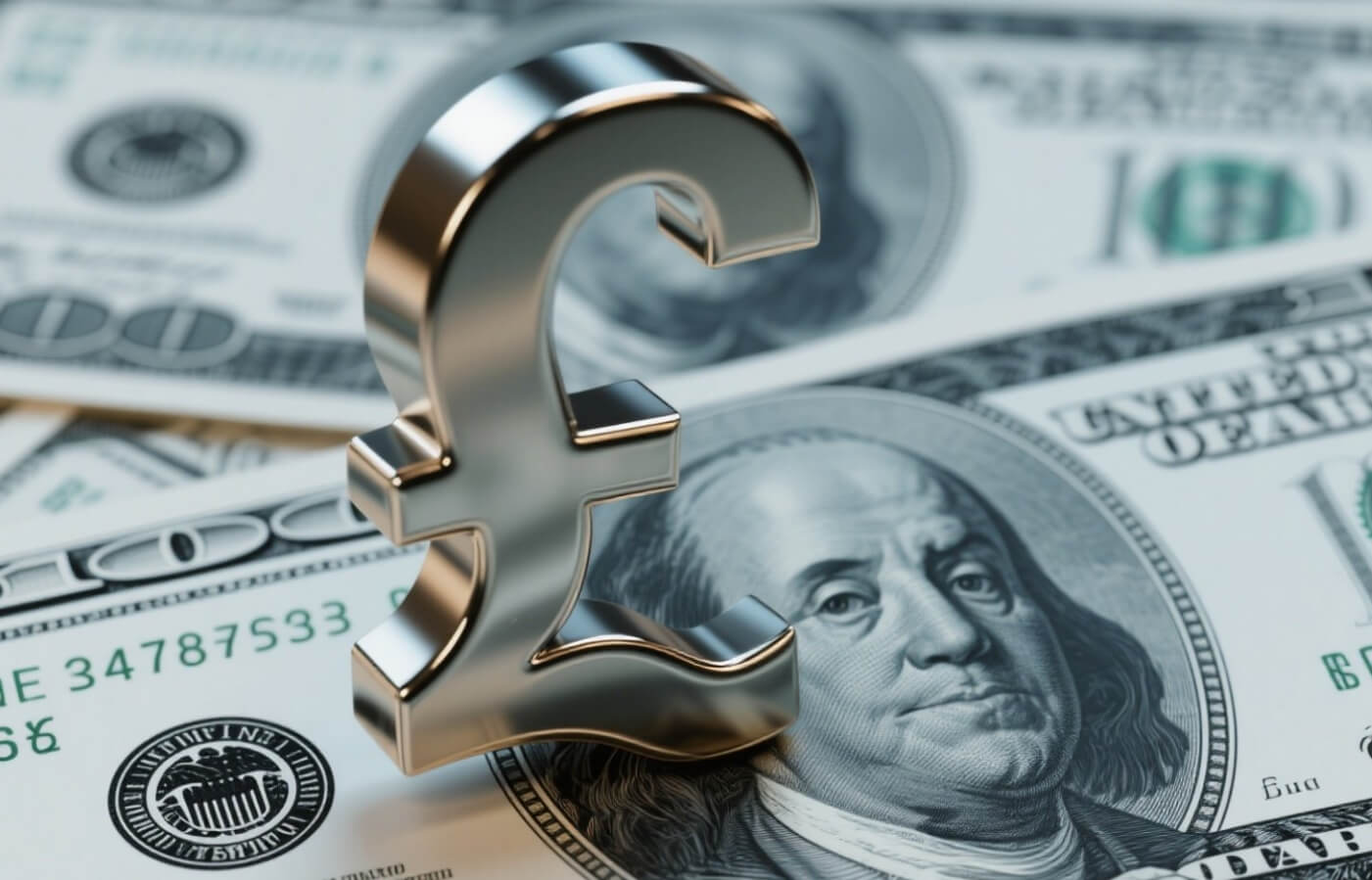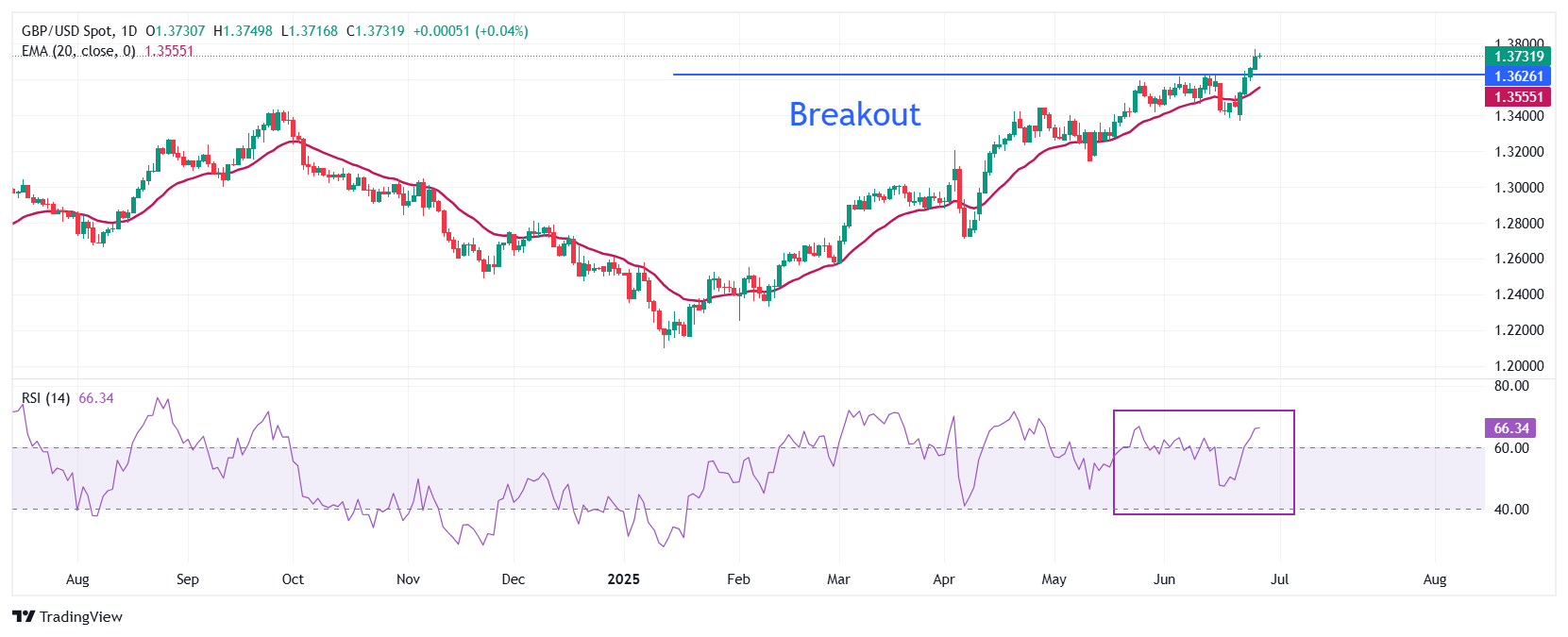
The Pound Sterling clings to gains near 1.3750 against a weakened US Dollar amid Trump-Powell policy tensions.
Investors fear that Fed Powell’s replacement for not supporting interest rate cuts will dampen the central bank’s credibility.
BoE’s Bailey warns of labor market risks due to an increase in employers’ contributions to National Insurance.
The Pound Sterling (GBP) holds onto gains near a fresh three-year high around 1.3770 against the US Dollar (USD) during European trading hours on Friday. The GBP/USD pair clings to gains as the US Dollar struggles to gain ground due to a sharp deterioration in its safe-haven demand, following tensions between United States (US) President Donald Trump and Federal Reserve (Fed) Chair Jerome Powell over the monetary policy status.
At the time of writing, the US Dollar Index (DXY), which tracks the Greenback’s value against six major currencies, struggles to hold the fresh three-and-a-half-year low around 97.00 posted on Thursday.
US President Trump has called Fed’s Chair Powell “terrible” for not lowering interest rates, and senior officials have confirmed that the President will find his successor as early as this summer, Wall Street Journal (WSJ) reported on early Thursday. The replacement of Fed’s Powell, who prioritized fundamental risks over Trump’s economic agenda, has forced traders to reassess the US Dollar’s exceptionalism.
Analysts at Principal Asset Management said, "Trump-Powell conflict brings up the whole concern about the credibility and reliability of US institutions again, which is typically something that people don’t like."
Meanwhile, traders have also raised Fed dovish bets, assuming that decisions made by Trump’s contender will be biased towards the President economic policies.
According to the CME FedWatch tool, the probability of the Fed cutting interest rates in July has increased to 20.7% from 12.5% a week ago.
Daily digest market movers: Pound Sterling trades steadily despite escalating UK labor market risks
The Pound Sterling trades broadly stable against its major peers on Friday. The British currency has remained firm this week despite growing concerns over the labor market strength and increasing upside inflation risks.
On Thursday, Bank of England (BoE) Governor Andrew Bailey , in a keynote speech at the British Chambers of Commerce’s (BCC) Global Annual Conference, cited concerns over uncertainty surrounding the inflation outlook and the labor market, Reuters reported. “In recent months, the evidence that slack is opening up has strengthened, especially in the labour market,” Bailey said.
Earlier this week, Andrew Bailey also warned of increasing employment risks in his testimony before the Lords Economic Affairs Committee. Bailey stated that the increase in employers’ contribution to social security schemes seems to be “affecting labour market”.
Meanwhile, a recent survey from the BCC also showed that almost one-third of small and medium-sized enterprises have or are planning to reduce their labor force as they struggle to bear the burden of an increase in employers’ contributions to National Insurance (NI).
On the monetary policy outlook, Governor Bailey reiterated a gradual downward interest rate path. Meanwhile, traders have priced in two interest rate cuts of 25 basis points (bps) in the remainder of the year that will push borrowing rates lower to 3.75%.
Going forward, investors will focus on revised estimates for the United Kingdom (UK) Q1 Gross Domestic Product (GDP) data, which will be released on Monday. According to the preliminary estimate, the UK economy expanded by 0.7% in the first quarter.
In the US, investors await the US Personal Consumption Expenditures (PCE) Price Index data for May, which will be published at 12:30 GMT. Investors should brace for more criticism from Donald Trump towards Jerome Powell for supporting a “wait and see” approach on interest rates if the data shows signs of price pressures cooling down further. On the contrary, signs of price pressures accelerating would encourage market experts to argue against Donald Trump’s support for interest rate cuts.
Technical Analysis: Pound sterling stays above 20-day EMA

The Pound Sterling clings to gains near a fresh three-year high around 1.3770 against the US Dollar during the European trading session on Friday. The GBP/USD pair strengthened after breaking above the horizontal resistance near the June 13 high around 1.3630 on Wednesday. The upward-sloping 20-day Exponential Moving Average (EMA) around 1.3555 suggests that the near-term trend is bullish.
The 14-day Relative Strength Index (RSI) jumps to near 65.00, suggesting that the momentum is on the upside.
Looking down, Monday’s low around 1.3370 will act as a key support zone. On the upside, the psychological level of 1.4000 will act as the key barrier.
* The content presented above, whether from a third party or not, is considered as general advice only. This article should not be construed as containing investment advice, investment recommendations, an offer of or solicitation for any transactions in financial instruments.


